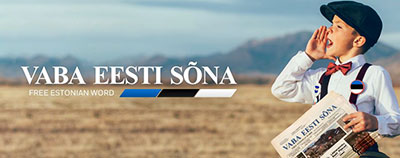Tähelepanu endised Seabrooki elanikud! Helga Merits, the acclaimed filmmaker of historical documentaries about Baltic refugees after the Second World War, is starting a film project about Seabrook Farms.
She will be visiting the U.S. in the beginning of September to conduct preliminary research at the Estonian Archives in Lakewood, NJ (9/9/19) and the Seabrook Educational and Cultural Center in Seabrook, NJ (9/10/19 – 9/13/19). She is looking for photos, films, audio recordings, letters, diaries, and written essays about Seabrook life, and would like to come back for a return visit to interview former and present Seabrookers in more detail. The film will be in English.
Between 1949 and now, more than 900 Estonians lived in Seabrook, New Jersey. For many of the Estonian refugees, it was a “waystation” in their journey for a new life in America. For others who stayed, it became a close-knit community within a multicultural village.
The Seabrook Farms frozen food processing plant was not only the largest of its kind in the 1940s and 1950s, but also had the most culturally diverse workforce of any rural industrial plant in the United States. The largest group of workers consisted of over 2,000 Japanese-Americans who had been forced to leave their homes and were interned in camps during the first years of WWII. Refugees and immigrants from many countries in war-torn Europe also came to live and work at Seabrook Farms. The housing was poor, the work conditions were hard: shifts of twelve hours six days a week and a change of shift every fortnight. At the same time, these people were still embedded in their own culture, as there were choirs, theatre, language lessons, dance groups, scouts, and religious services.
Among the questions Helga hopes to answer in the film are: “What can we learn from the Seabrook Farms history, where so many different nationalities and cultures all were working in the same plant, sharing the same living quarters and living conditions? How did the different communities live together, what did they share?
In what way did the Estonian or Latvian community, their cultural life, help to overcome the difficult wartime and first post-war years? Did it create a safe environment, an environment where the parents could feel at home, despite being so far away from it? Did this in fact make it easier for the children to integrate into American society? These questions are interesting from a historical point of view and important because of the diverisity of refugees arriving in Europe today.”
If you would like to help, please contact Helga Merits ([email protected]), Valdis Basens ([email protected]), Indrek Ojamaa ([email protected]) or Marilem Soodla Ferentinos ([email protected]).













